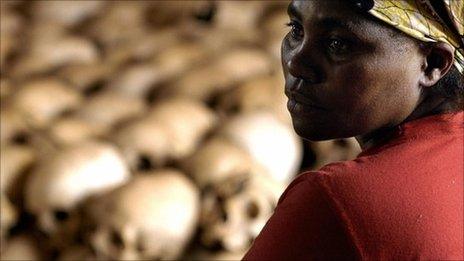The Rwanda photographs that reunited families
- Published

Throughout my years at the BBC I have watched photographs arrive on the news wires from all parts of the globe, many depicting the latest conflict, natural disaster or refugee crisis.
The images are often distressing and stick in the mind, yet the conflict in Rwanda from 20 years ago is arguably one that saw some of the most heart-wrenching pictures I have seen. Plus, some that are beyond description.
Between April and June 1994, in the space of 100 days, extremist Hutus slaughtered some 800,000 people, mostly ethnic Tutsis but also some moderate Hutus. You can read the background to that in other stories on this site, but I wanted to mark the moment here.
There are times when a photograph can raise awareness of an event and perhaps act as a catalyst for action, and at other times they can seem to be little more than an intrusion into times of sorrow. Sometimes, even when the event depicted is one of total horror, the world fails to react in a way that perhaps we'd hope it might. Of course there might be complex and diverse reasons for that.
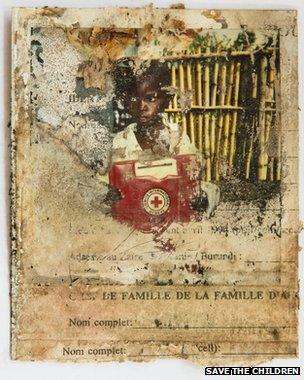
But there are also pictures that do so much more, and a set of photographs unearthed in the offices of Save the Children in Kigali, Rwanda, did just that. They are not well-crafted pictures by professionals, but Polaroid snaps that do what photography does best by providing a facsimile of the real world. These pictures changed lives, and gave some hope for their future.
Following the genocide in 1994, Save the Children worked to document children across the country who had been orphaned or separated from their families. The goal was to reunite children with surviving family members or to place them with families who could raise them.
The archive found in Rwanda in 2013 contained thousands of Polaroid photos and hand-written files and inspired a team to try to find some of these children as adults and ask them about their memories of that time.
Flodouard, Cyprien and Gloriose
After witnessing his parents being killed in the first days of the genocide in the village of Jali, Flodouard collected his younger siblings, Cyprien and Gloriose, and fled.
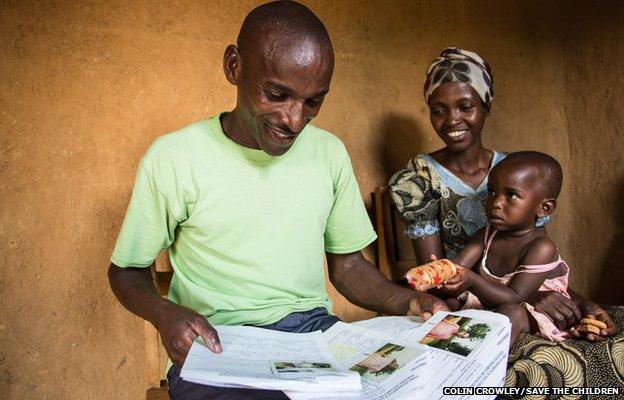
Flodouard, now 35, looks through the 1995 Save the Children case files of himself and his brother and sister
Flodouard said: "We survived the massacres by the grace of God, because on our own we would never have been capable.
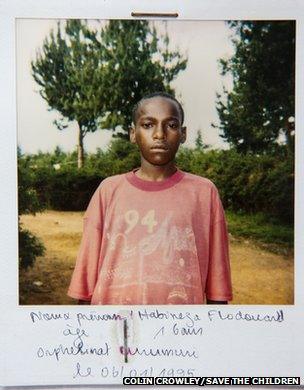
"This was on 11 April 1994. That is the date our parents were killed here in Nyamitanga [a small village in Jali where they lived]. When the massacres were happening, I was there but I hid myself underneath the corpses. It was as if God himself was hiding me, but I saw everything that happened.
"There were dead bodies on top of me, but I was able to get up and run away all the way until I reached the military barracks. There were many of us who fled to the barracks, I remember there was a heavy rain falling, we were taken in there by the soldiers, by the government soldiers. At nine in the morning, the interahamwe [Hutu militia] came there to kill us. When they came, it was at this very moment that the rebel soldiers of the RPF [Rwandan Patriotic Front, Tutsis] arrived.
"We spent a week in Karuruma. After several weeks the soldiers of the RPF told us we should flee because the battles were getting more dangerous. Bombs started falling on top of us at Karuruma so we took to the road and headed towards Byumba. When we made it as far as the sugar factory, the RPF soldiers told us to rest and that they would arrange for us to be transported in vehicles. So we spent the night there. During the night, they brought vehicles and they took us to Byumba. I remember we arrived there very late at night I was with my siblings this entire time. I was with my three younger siblings. The youngest one was only two years old. But because I didn't know how to take care of a little child, she died when we arrived at Byumba. That's where she is buried.
"I can't say that I had any strength. It's God who did everything. At that time, when you found someone from your family who had survived… I can't explain where that strength came from. It was just there.
"You see it was during such a difficult time. We had already gone four days without eating. At the time, we were hungry and we were in mourning, but when you see someone from your family, whether it's a child or an adult - the strength to take that person and flee with them just comes to you. We didn't even think about our hunger, we only thought about saving the lives of our family."
After documenting and tracing the children's known relatives, Save the Children reunited the siblings with a paternal uncle and returned them to their home village of Jali. When Flodouard turned 18, he did a small job until he saved up enough money to establish a farm on his parents' land.
At this point, he gave up on the opportunity to pursue an education or professional career in order to build a house back in the village in the Rutongo district where the family are from and raise his younger siblings in a home where they could live together as a family. Flodouard is now a small farmer and the father of three children of his own.
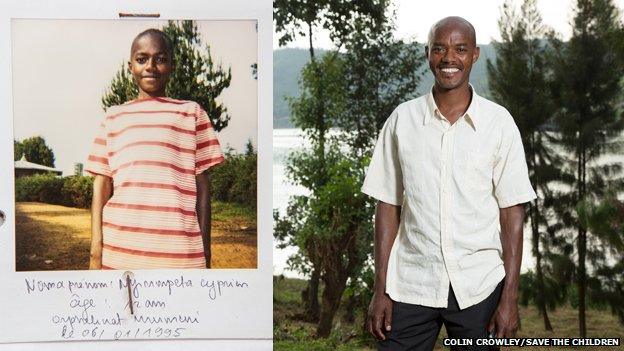
Cyprien currently lives in Gisenyi, where he works as a mechanic in the Rwanda military.
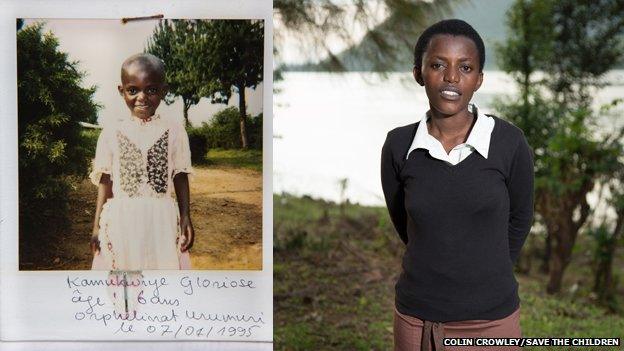
Gloriose is currently studying crop science at the University of Rwanda's College of Agriculture, Animal Sciences, and Veterinary Medicine in Busogo. Her dream is to complete a masters degree and have a career that will allow her to take care of her older brothers and pay the school fees for her nieces and nephews.
Evans and Jean-Baptiste
Evans was eight years old when he and his brother Jean-Baptiste, then 15, had to leave their village during the genocide.
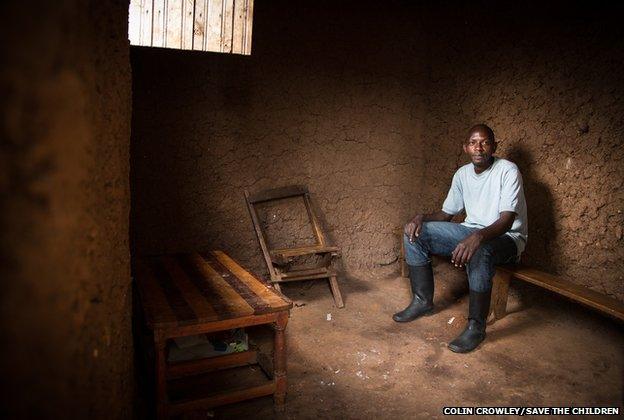
Evans said: "When I look at this picture of myself from this time, I see a child who was suffering a lot. The child in this photo didn't know what had happened to his family. And after this photo was taken, I suffered even more when I realised that my parents were gone. Little by little, my wounds healed, but my suffering is still with me.

"When I saw this photo of myself I was surprised. I can't believe that Save the Children would still remember me and come to see me. I also can't believe a photograph of me as a child even exists.
"I've never had a photo of myself as a youth. But especially to see that Save the Children has come back to visit me all these years later - it's very moving for me.
"Given that I lived through such a difficult time in my life, seeing this photo reminds me of how far I have come since then. It makes me think about the path I've taken to get where I am today. There was a time in my life where I didn't know if I would live one day to the next, where I felt like I wasn't going to survive - but here I am. Seeing this photo brings back the long journey I've made from then until now."
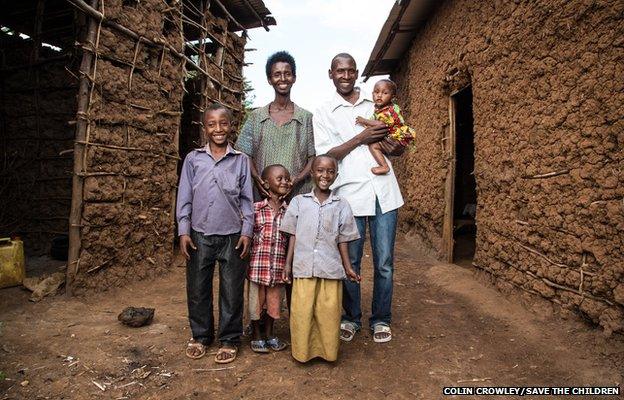
Jean-Baptiste, 34, with his family
-lpr.jpg)
Jean-Baptiste said: "I lost my family as a child and I had a difficult life. But now that I am a father and I am raising my own children, I understand the importance of family. A family is a child's main source of protection. I am able to provide for my children and make sure that they have enough to eat and don't have to search for food on their own. I protect my children so that they do not suffer through what I suffered, so that they never have to be the victims of violence or exploitation.
"When a child has a family, they have protectors who look after them, who feed them - who protect them from harm. My hope for my children is that they are able to go to school and get an education, that they live in a peaceful country, that they are able to grow up and have jobs and live happily.
"Myself, I lost so many things in my life. I wasn't able to finish my education because I had no family to support me. Now I am doing everything I can to make sure my children have the good things that I wasn't able to have."

And finally, a small selection of Polaroid photographs that capture the moment of reunification between separated children and their families.
-lpr.jpg)
-lpr.jpg)
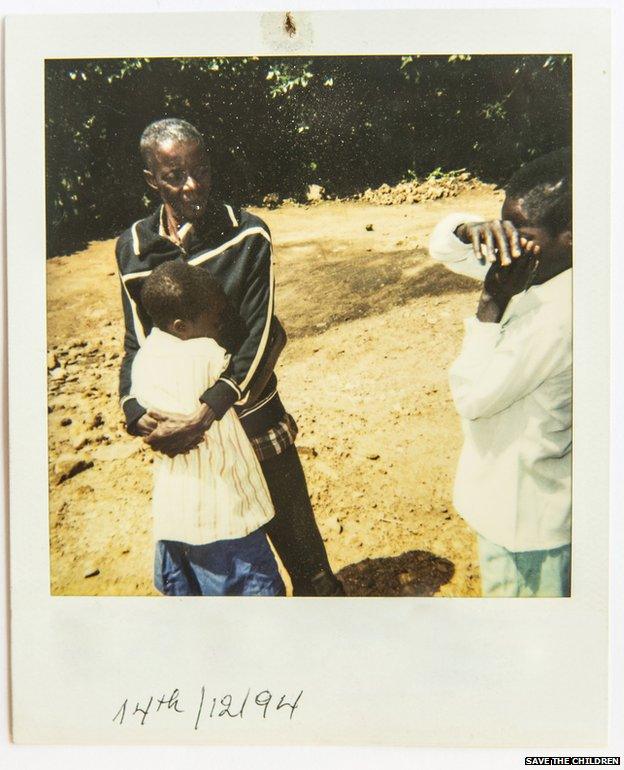
-lpr.jpg)
- Published17 May 2011
